Green Moong Dal (Split) Recipe, also called Green Gram Dal or Sabut Moong Dal, is a simple and delicious dish made from whole green lentils. Its mild, earthy flavor makes it a favorite in many Indian homes. Let’s dive into this recipe, where I’ll share my personal favorite way to make it!
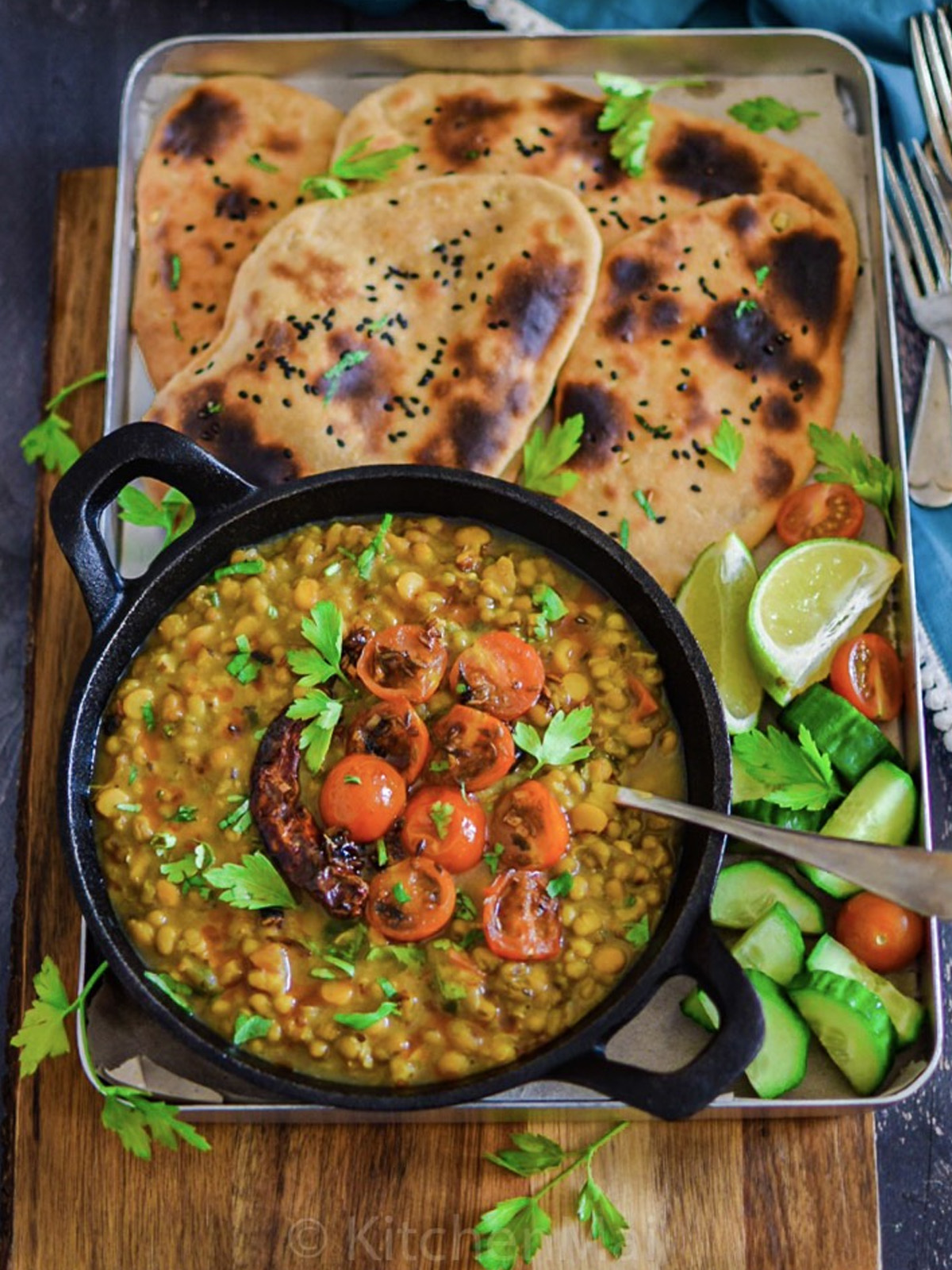
Jump to:
About Green Moong Dal Recipe
The Green Moong Dal (Split) Recipe comes from India, where lentils grow in abundance. It’s also known as "Green Gram Curry" or "Sabut Moong Dal."
Originally a North Indian favorite, it’s now popular all across the country because it’s both healthy and delicious. Some places even add their own twist, like the spiced-up Dhaba Style served at roadside eateries.
Green Moong Dal Recipe is not just tasty but super nutritious! It has a nutty flavor and holds its shape when cooked, making it perfect for curries or soups. Plus, it’s packed with protein, fiber, and vitamins, making it an excellent addition to a balanced diet.
The best part? It’s super simple to make with basic ingredients. While other lentils cook faster, green moong stays firm, giving it a great texture.
With spices like cumin, coriander, and turmeric, plus a bit of ginger, garlic, and green chilies for heat, you can adjust the spice level however you like!
Craving more tasty treats? Try these mouthwatering recipes: Green Moong Dal Cheela, Moong Dal Cheela Recipe, Matar Paratha, Dal Fry Recipe, and of course, the classic Moong Dal Recipe. Each one is packed with flavor and goodness—perfect for every foodie adventure!
Health Benefits of Green Moong Dal
Rich in Protein
- Green Moong Dal is packed with plant-based protein, making it perfect for vegetarians and vegans! It helps build and repair muscles, keeping you strong and healthy.
High in Fiber
- This dal is full of fiber, which is awesome for digestion. It also keeps your heart healthy and helps manage weight by keeping you full longer.
Packed with Essential Nutrients
- Plus, Green Moong Dal is loaded with essential vitamins and minerals like folate, iron, magnesium, and potassium, all of which are great for your overall health.
Supports Detoxification and Digestion
- Lastly, it's an Ayurvedic superfood! Moong dal is easy to digest, detoxifies your body, and promotes gut health, making it the perfect dish for a healthy digestive system.
Ingredients You’ll Need for This Delicious Dish!
Cooking Essentials for the Best Moong Dal Ever!
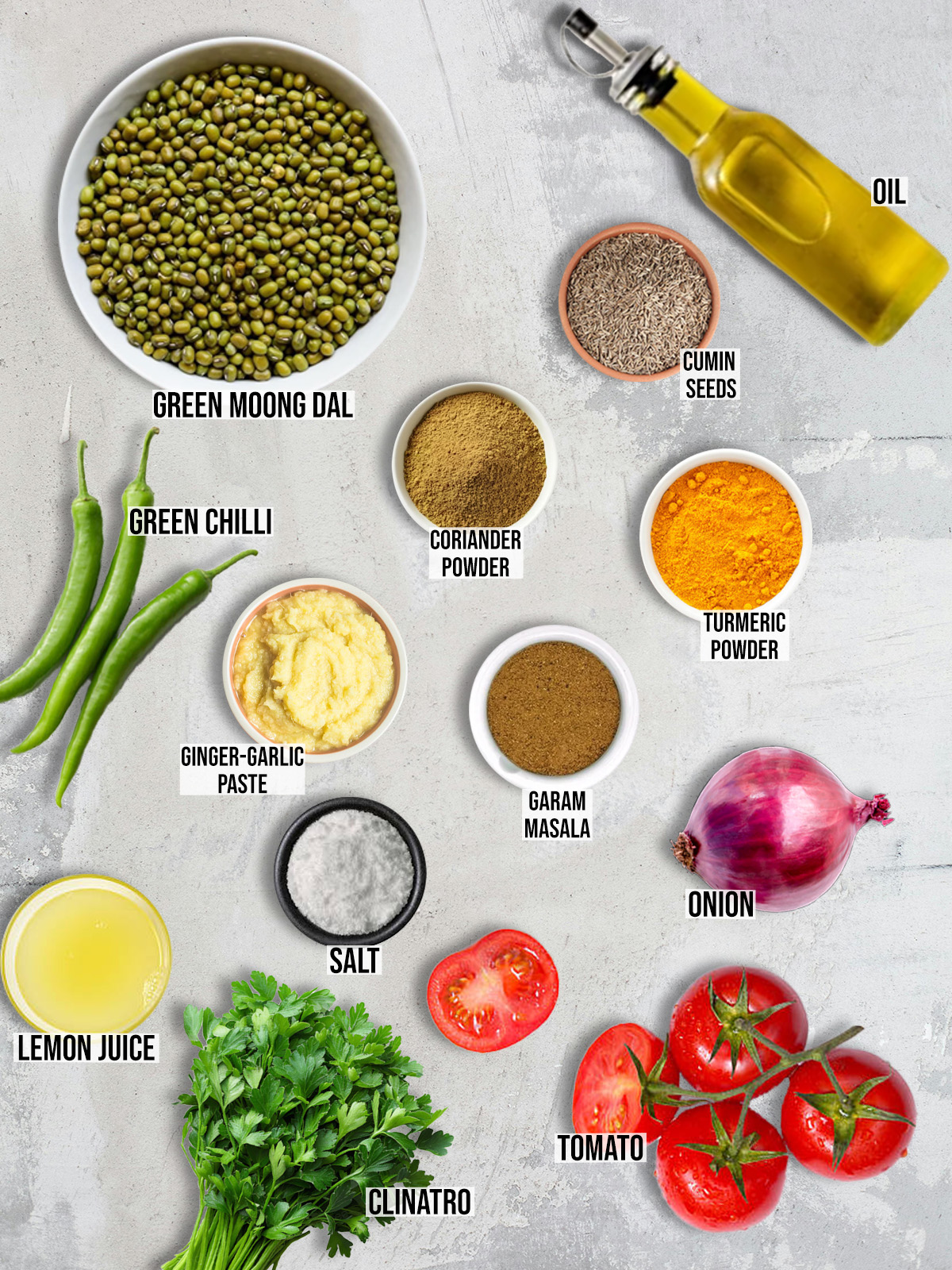
Ingredients Notes:
- Green Moong Dal (Split Lentils): These lentils are my go-to! Full of protein and fiber, they’re the heart of the dish.
- Water: Just enough water to get that soft, perfect texture—no one likes dry dal!
- Spices: Cumin, coriander, and turmeric are a must! They bring that deep, earthy flavor that makes everything taste so good.
- Fresh Ginger & Garlic: I love the zing these add! It’s what gives the dal its kick.
- Green Chilies: If you're like me and love some spice, these add the perfect heat!
- Tomato: A tangy base that brightens up the whole dish.
- Oil or Ghee: The tadka wouldn’t be the same without it—adds that amazing aroma!
- Salt: To pull everything together and balance the flavors just right.
- Cilantro: Always top it off with fresh cilantro for that burst of freshness!
How to Make Green Moong Dal
1. Preparing the Green Moong Dal
Soaking:
- First, rinse the green moong dal under cold water until the water runs clear. Then, soak it in water for at least 2 hours. This makes the dal cook faster and helps it soften evenly.
Tip: If you’re in a hurry, you can skip soaking, but it will take longer to cook.
Cooking the Dal:
- Next, drain the soaked dal. For the quickest cooking, use a pressure cooker.
- Add the dal and 3 cups of water, then cook for 2-3 whistles. If you’re using an open pot, add 4 cups of water and let it simmer for 25-30 minutes.
2. Preparing the Tempering
Sauteing the Base:
- Next, add the chopped onions and sauté them until they turn golden brown. This step is important because it creates the flavor base.
Adding Aromatics:
- Once the onions are golden, add ginger-garlic paste and green chilies. Sauté for a minute until the raw smell goes away. After that, add the chopped tomatoes and cook until they’re soft.
- Finally, mix in turmeric powder, coriander powder, and salt, stirring well. Cook until the tomatoes blend into the mixture.
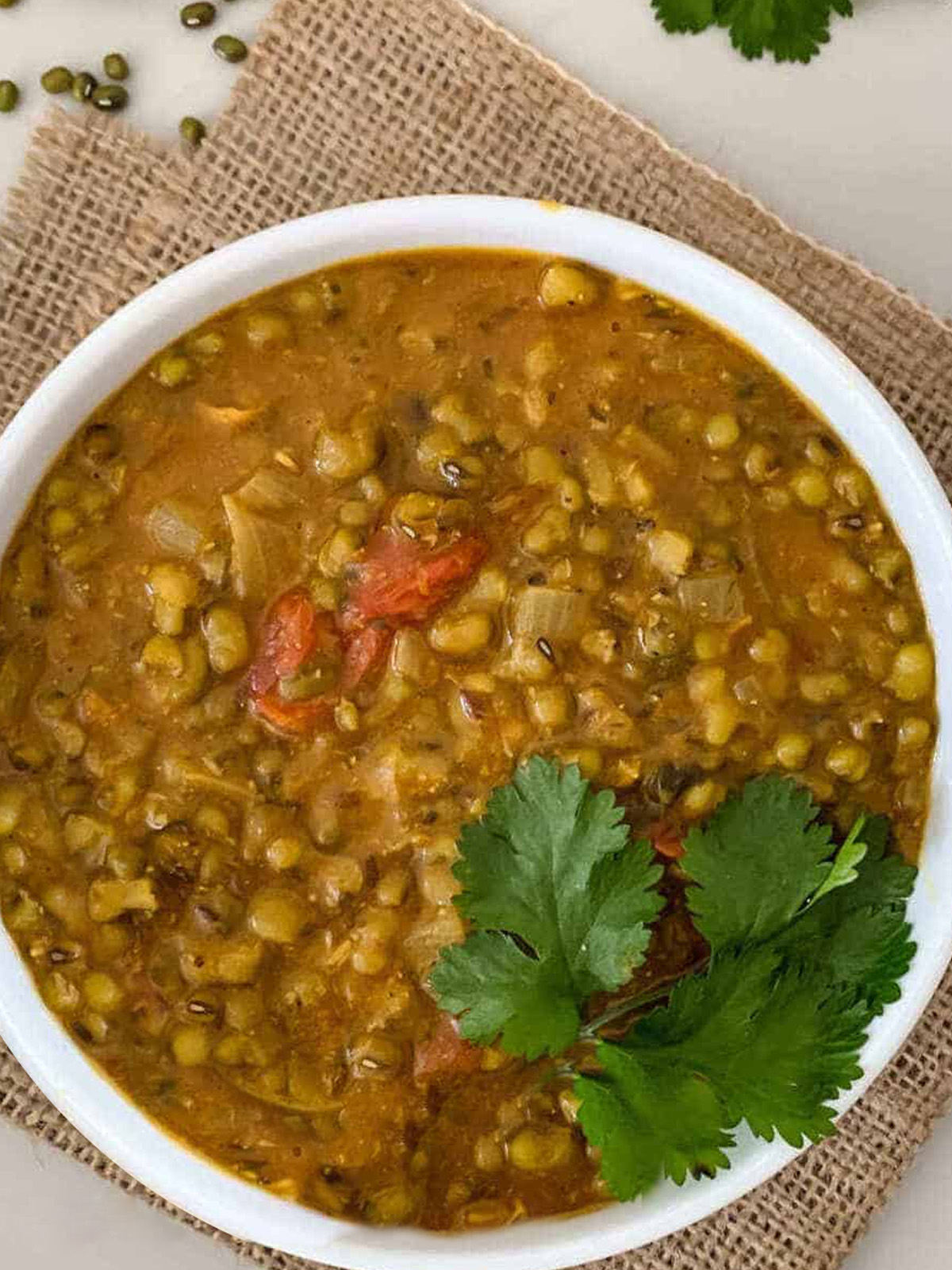
3. Combining the Dal with the Tempering
Mixing:
- Add the cooked green moong dal to the onion-tomato mixture. In either case, mix everything together so that the flavors meld well.
- After that, add more water if you prefer a thinner consistency. In general, 1 cup of water should be enough.
Simmering:
- Simmer the dal for 10 minutes on low heat so that all the flavors develop fully. Another key point here is to stir occasionally to prevent sticking. To explain, simmering enhances the richness of the dish.
4. Final Touches
Seasoning:
- Adjust the seasoning if needed. In addition, you can sprinkle garam masala at this stage for an extra layer of flavor.
Garnishing and Serving:
- At last, garnish with fresh coriander leaves and a dash of lemon juice. Serve hot with steamed rice or roti. In the meantime, prepare a side dish like papad or pickle to complement the dal.
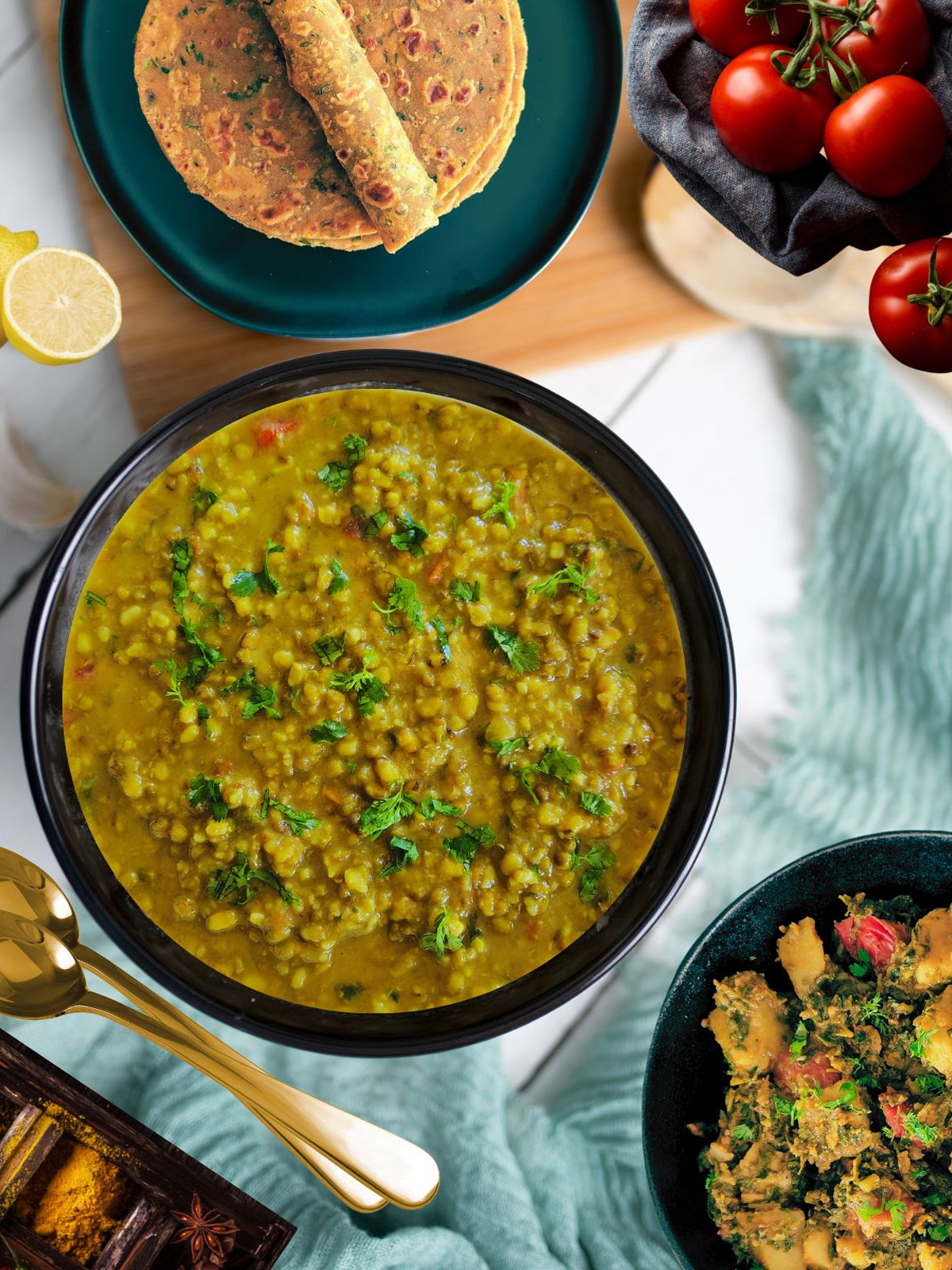
Variations:
1. Moong Dal with Spinach (Moong Dal Palak)
First, try adding spinach (palak) to your moong dal! This variation not only makes the dal extra green but also boosts its iron and vitamin content. It’s a great way to sneak in some leafy greens!
2. Moong Dal with Vegetables
Next, you can add some crunchy vegetables like carrots, peas, or even bottle gourd (lauki) for a more hearty, colorful dal. This makes your meal even more nutritious and filling!
3. Moong Dal with Coconut
Want to switch it up? Try adding coconut! You can use coconut milk or grated coconut for a creamy, aromatic twist that brings a South Indian flavor to your dal. It’s rich and comforting!
4. Moong Dal with Rice
Finally, for a complete meal, serve your moong dal with rice. This combination gives you both protein from the dal and carbohydrates from the rice, making it the perfect balance for a healthy, filling meal!
Serving Suggestions
Classic Accompaniments
First, serve your Green Moong Dal with some steaming basmati rice, jeera rice, or chapati (roti) for a complete and satisfying meal. These combos bring the perfect balance of flavors and textures!
Side Dishes
For an extra punch, pair your dal with side dishes like refreshing raita, crispy papad, or a fresh veggie salad. These help to balance the richness and spice of the dal, making every bite even better!
Serving in a Thali
Want to go all out? Serve your Green Moong Dal as part of an Indian thali! A thali is a platter with various dishes, and it’s a great way to enjoy a well-rounded meal that includes dal, curries, rice, and more.
Pro-Tips
1. Achieving the Right Texture
First, focus on cooking your dal to the perfect consistency. It should be soft and creamy, with a slightly soup-like texture. If you prefer a thicker dal, simply let it simmer for a bit longer. On the other hand, for a soupier version, add extra water as needed.
2. Balancing Flavors
If the dal tastes a bit bland, don’t worry! Try adding a pinch of salt or a bit more spice, like cumin or coriander powder. You can also squeeze in some fresh lemon juice to brighten the flavors and make it pop!
3. Adjusting Spice Levels
Want to adjust the spice? If your dal is too spicy, add a small amount of yogurt or coconut milk. These will mellow it out and balance the heat perfectly!
4. Garnishing Tips
Finally, garnish your dal with fresh cilantro, a swirl of cream, a squeeze of lemon, or even a dash of garam masala. These small touches will elevate the flavor and make your dal look even more appetizing!
Did you try this Green Moong Dal Recipe? Leave a ⭐️⭐️⭐️⭐️⭐️ rating below and share it on Instagram, Facebook, and Pinterest!
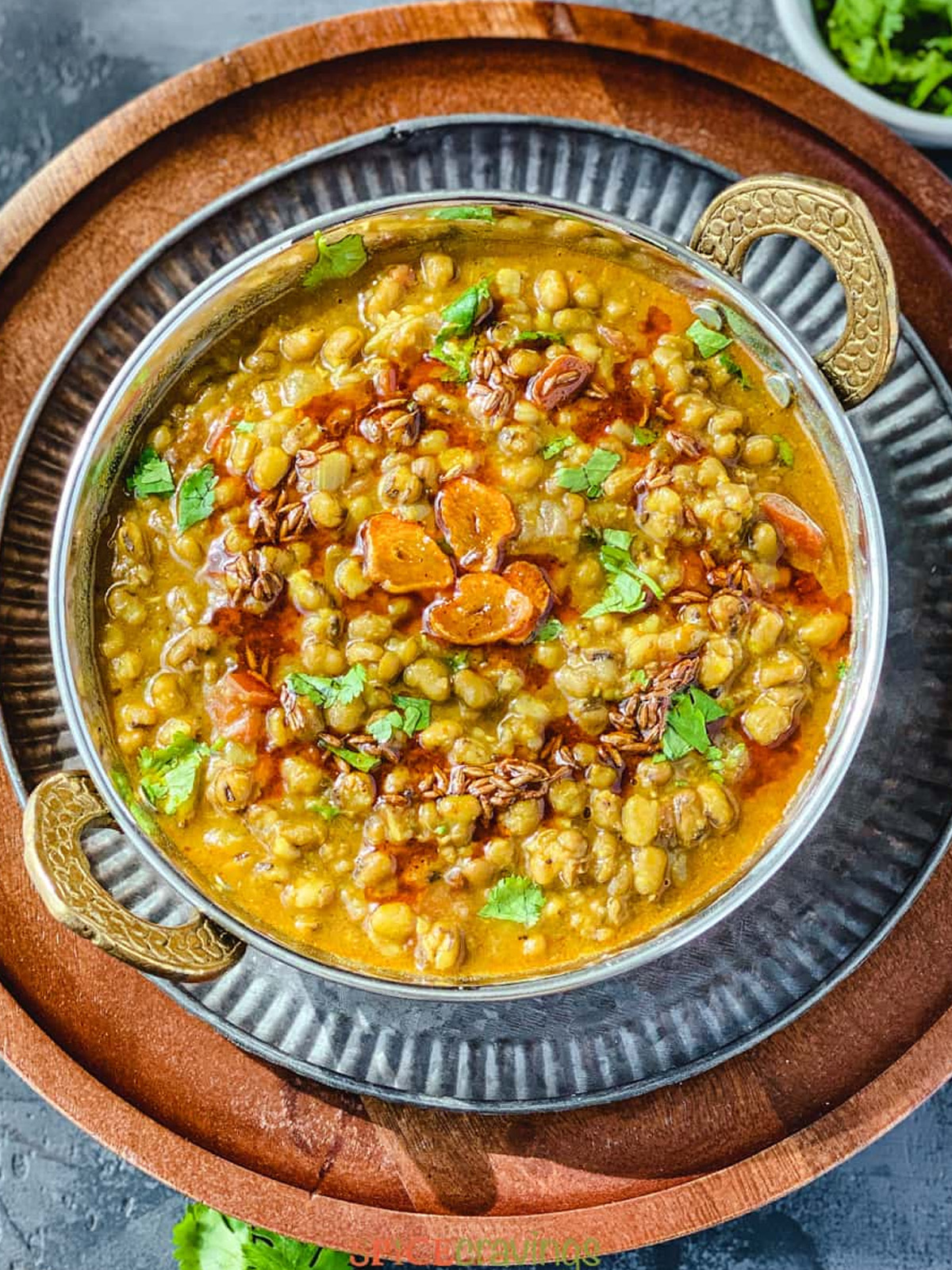
❔FAQs
Yes, you can make Green Moong Dal without soaking, but it will take longer to cook. Soaking the dal for 2-3 hours helps reduce the cooking time and softens the dal, giving it a better texture.
Green Moong Dal is typically served with steamed rice, roti, or naan. You can also pair it with papad, pickles, or a fresh salad for a complete meal.
Yes, Green Moong Dal is highly nutritious. It is a great source of plant-based protein, fiber, and essential vitamins and minerals. It’s a healthy option for vegetarians and vegans, aiding digestion and boosting overall health.
Yes, you can add vegetables like spinach, carrots, or tomatoes to this recipe to enhance its nutritional value. Adding veggies makes the dish more wholesome and flavorful.
Green Moong Dal uses whole green gram, while yellow moong dal comes from split and hulled green gram. Green Moong Dal has a slightly earthy flavor, while yellow moong dal is milder and cooks faster.
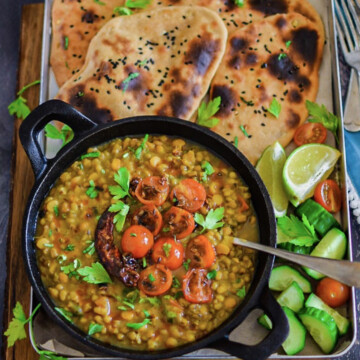
Green Moong Dal Recipe
Ingredients
Ingredients:
- 1 Cup Green Moong Dal (Whole Green Gram)
- 1 tablespoon Ghee or oil
- 1 teaspoon Cumin seeds
- 1 Onion, finely chopped
- 2 Tomatoes, chopped
- 1 teaspoon Ginger-garlic paste
- 2 Green chilies, slit
- ½ teaspoon Turmeric powder
- 1 teaspoon Coriander powder
- 4 Cup Water
- Salt to taste
- Fresh coriander leaves for garnish
- ½ teaspoon Garam masala (optional)
- 1 tablespoon Lemon juice (optional)
Instructions
Preparing the Green Moong Dal
Soaking:
- First, rinse the green moong dal under cold water until the water runs clear. Then, soak it in water for at least 2 hours. This makes the dal cook faster and helps it soften evenly.
- Tip: If you’re in a hurry, you can skip soaking, but it will take longer to cook.
Cooking the Dal:
- Next, drain the soaked dal. For the quickest cooking, use a pressure cooker.
- Add the dal and 3 cups of water, then cook for 2-3 whistles. If you’re using an open pot, add 4 cups of water and let it simmer for 25-30 minutes.
Preparing the Tempering
Sauteing the Base:
- Next, add the chopped onions and sauté them until they turn golden brown. This step is important because it creates the flavor base.
Adding Aromatics:
- Once the onions are golden, add ginger-garlic paste and green chilies. Sauté for a minute until the raw smell goes away. After that, add the chopped tomatoes and cook until they’re soft.
- Finally, mix in turmeric powder, coriander powder, and salt, stirring well. Cook until the tomatoes blend into the mixture.
Combining the Dal with the Tempering
Mixing:
- Add the cooked green moong dal to the onion-tomato mixture. In either case, mix everything together so that the flavors meld well.
- After that, add more water if you prefer a thinner consistency. In general, 1 cup of water should be enough.
Simmering:
- Simmer the dal for 10 minutes on low heat so that all the flavors develop fully. Another key point here is to stir occasionally to prevent sticking. To explain, simmering enhances the richness of the dish.
Final Touches
Seasoning:
- Adjust the seasoning if needed. In addition, you can sprinkle garam masala at this stage for an extra layer of flavor.
Garnishing and Serving:
- At last, garnish with fresh coriander leaves and a dash of lemon juice. Serve hot with steamed rice or roti. In the meantime, prepare a side dish like papad or pickle to complement the dal.
Notes
Variations:
1. Moong Dal with Spinach (Moong Dal Palak)First, try adding spinach (palak) to your moong dal! This variation not only makes the dal extra green but also boosts its iron and vitamin content. It’s a great way to sneak in some leafy greens! 2. Moong Dal with Vegetables
Next, you can add some crunchy vegetables like carrots, peas, or even bottle gourd (lauki) for a more hearty, colorful dal. This makes your meal even more nutritious and filling! 3. Moong Dal with Coconut
Want to switch it up? Try adding coconut! You can use coconut milk or grated coconut for a creamy, aromatic twist that brings a South Indian flavor to your dal. It’s rich and comforting! 4. Moong Dal with Rice
Finally, for a complete meal, serve your moong dal with rice. This combination gives you both protein from the dal and carbohydrates from the rice, making it the perfect balance for a healthy, filling meal!
Pro-Tips
1. Achieving the Right TextureFirst, focus on cooking your dal to the perfect consistency. It should be soft and creamy, with a slightly soup-like texture. If you prefer a thicker dal, simply let it simmer for a bit longer. On the other hand, for a soupier version, add extra water as needed. 2. Balancing Flavors
If the dal tastes a bit bland, don’t worry! Try adding a pinch of salt or a bit more spice, like cumin or coriander powder. You can also squeeze in some fresh lemon juice to brighten the flavors and make it pop! 3. Adjusting Spice Levels
Want to adjust the spice? If your dal is too spicy, add a small amount of yogurt or coconut milk. These will mellow it out and balance the heat perfectly! 4. Garnishing Tips
Finally, garnish your dal with fresh cilantro, a swirl of cream, a squeeze of lemon, or even a dash of garam masala. These small touches will elevate the flavor and make your dal look even more appetizing!
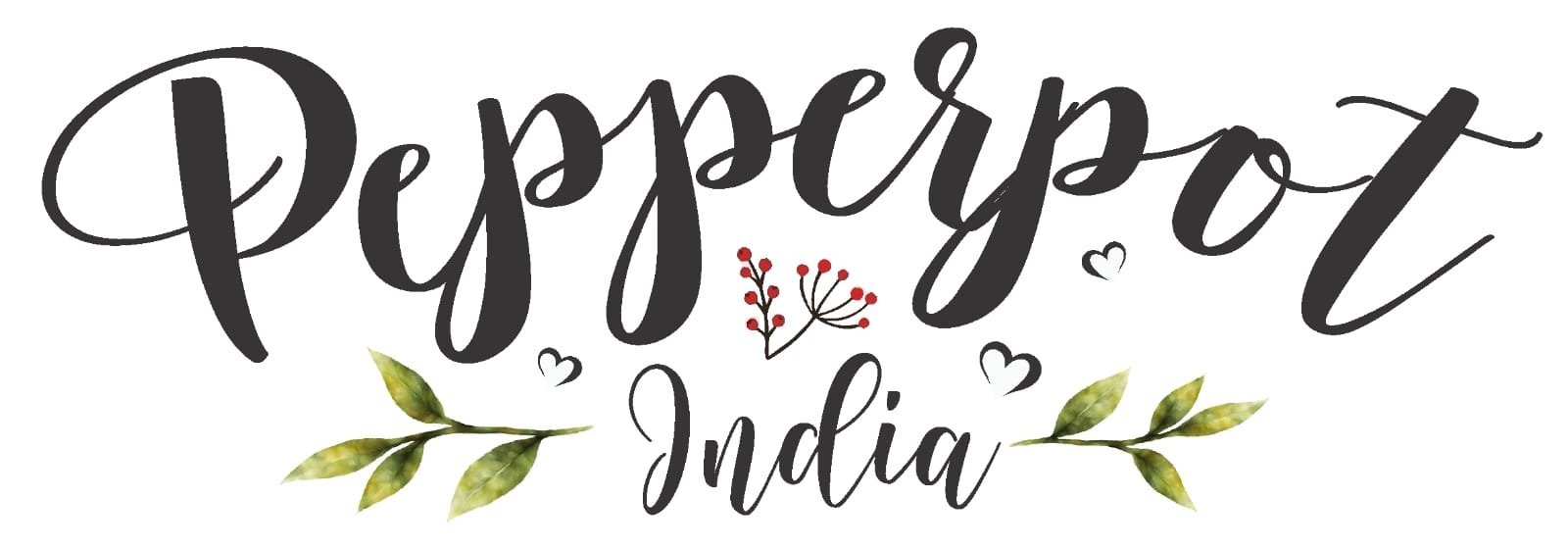

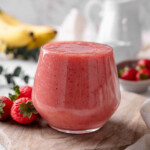

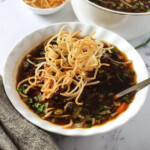

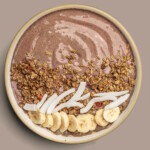





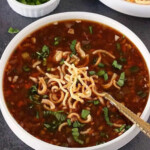
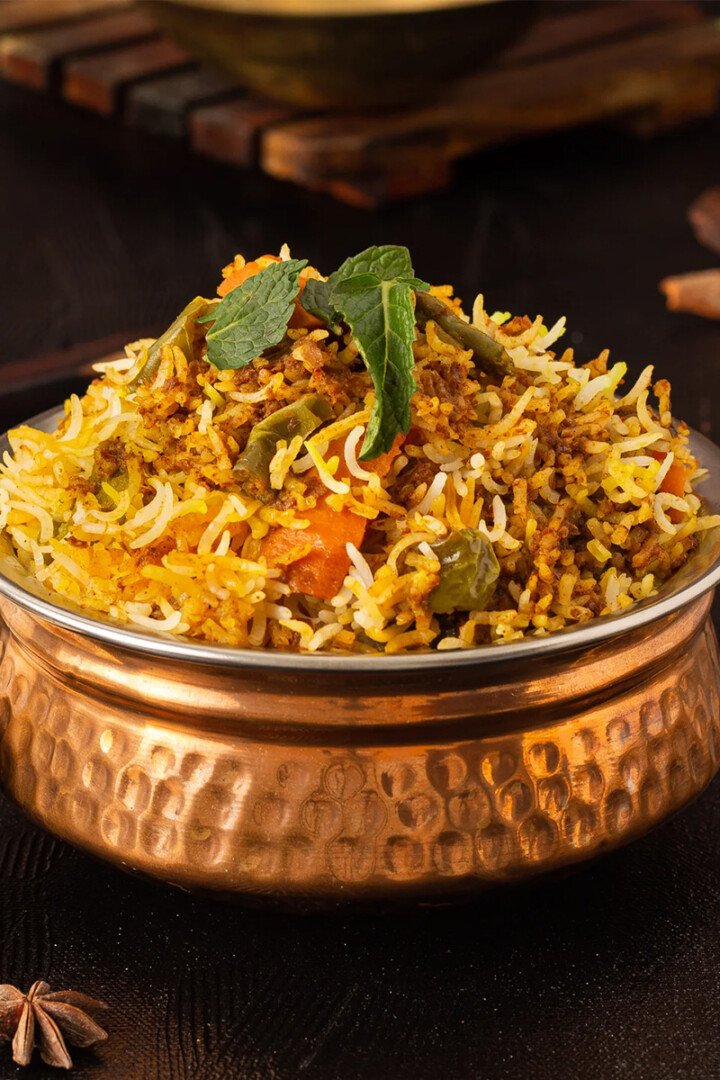
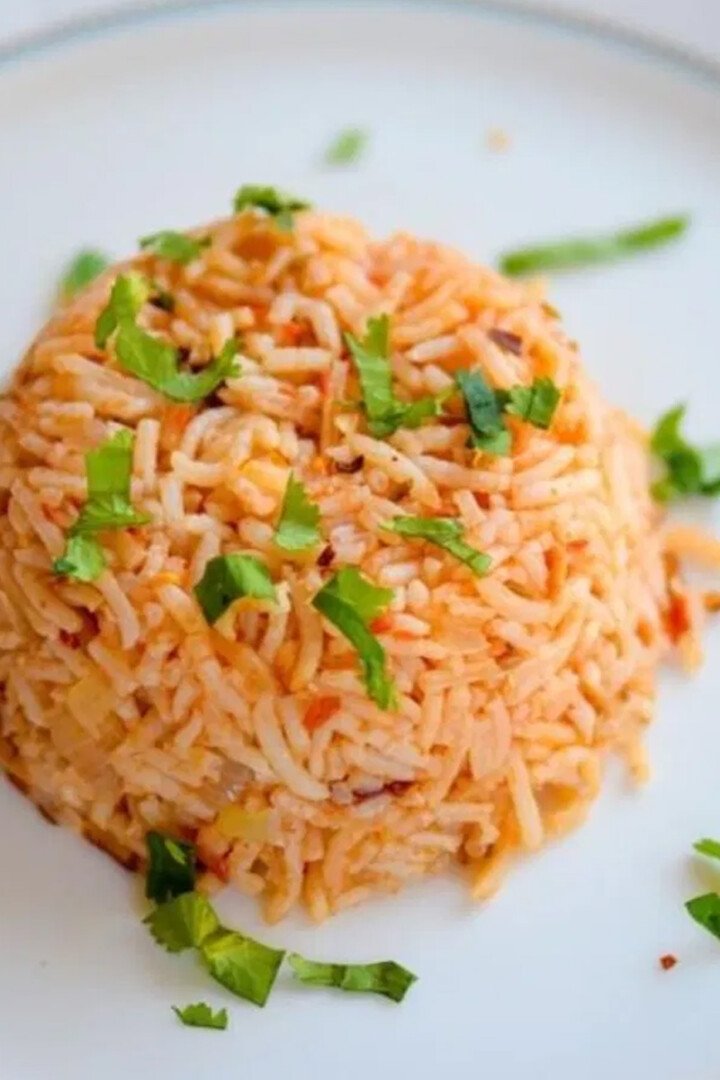
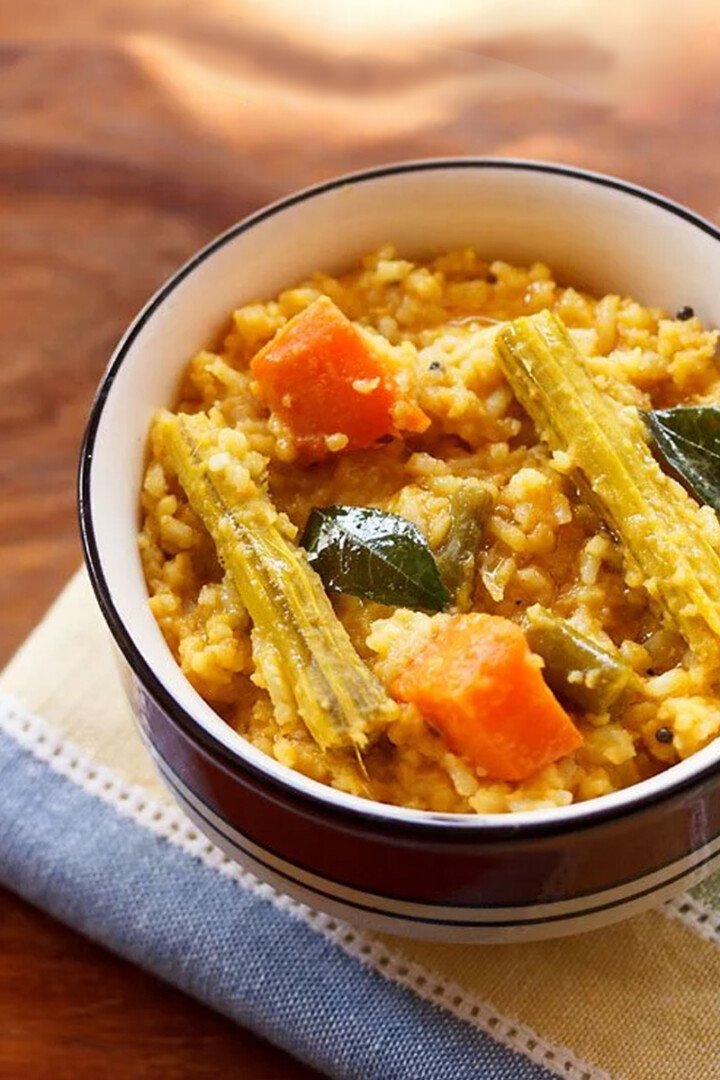
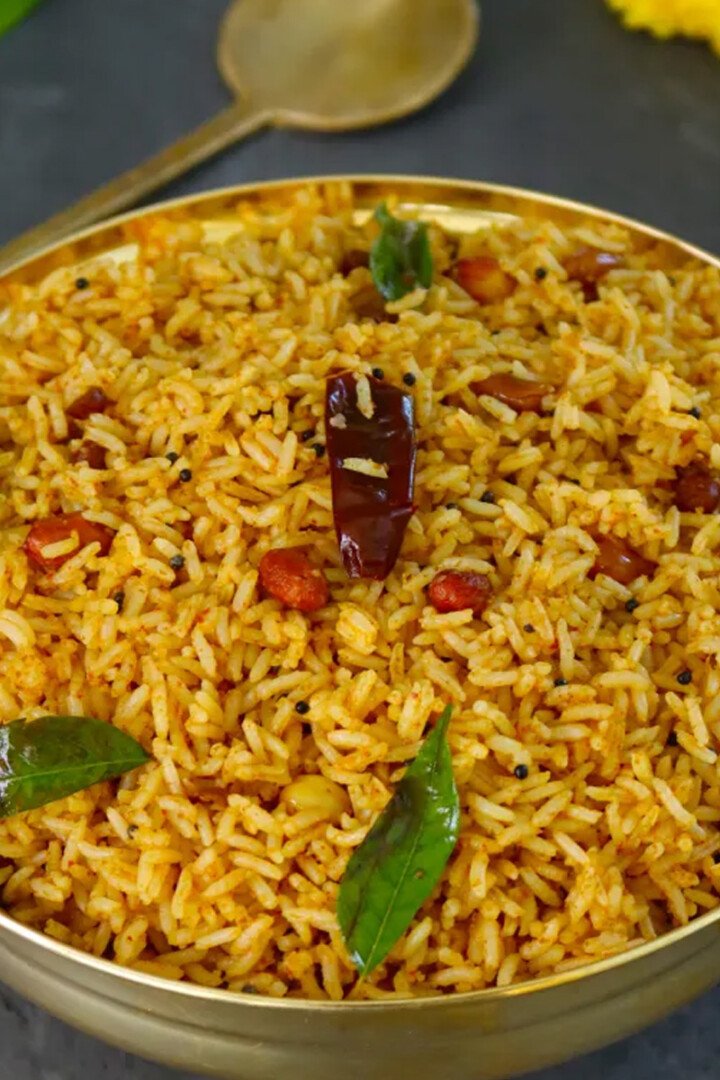
Leave a Reply